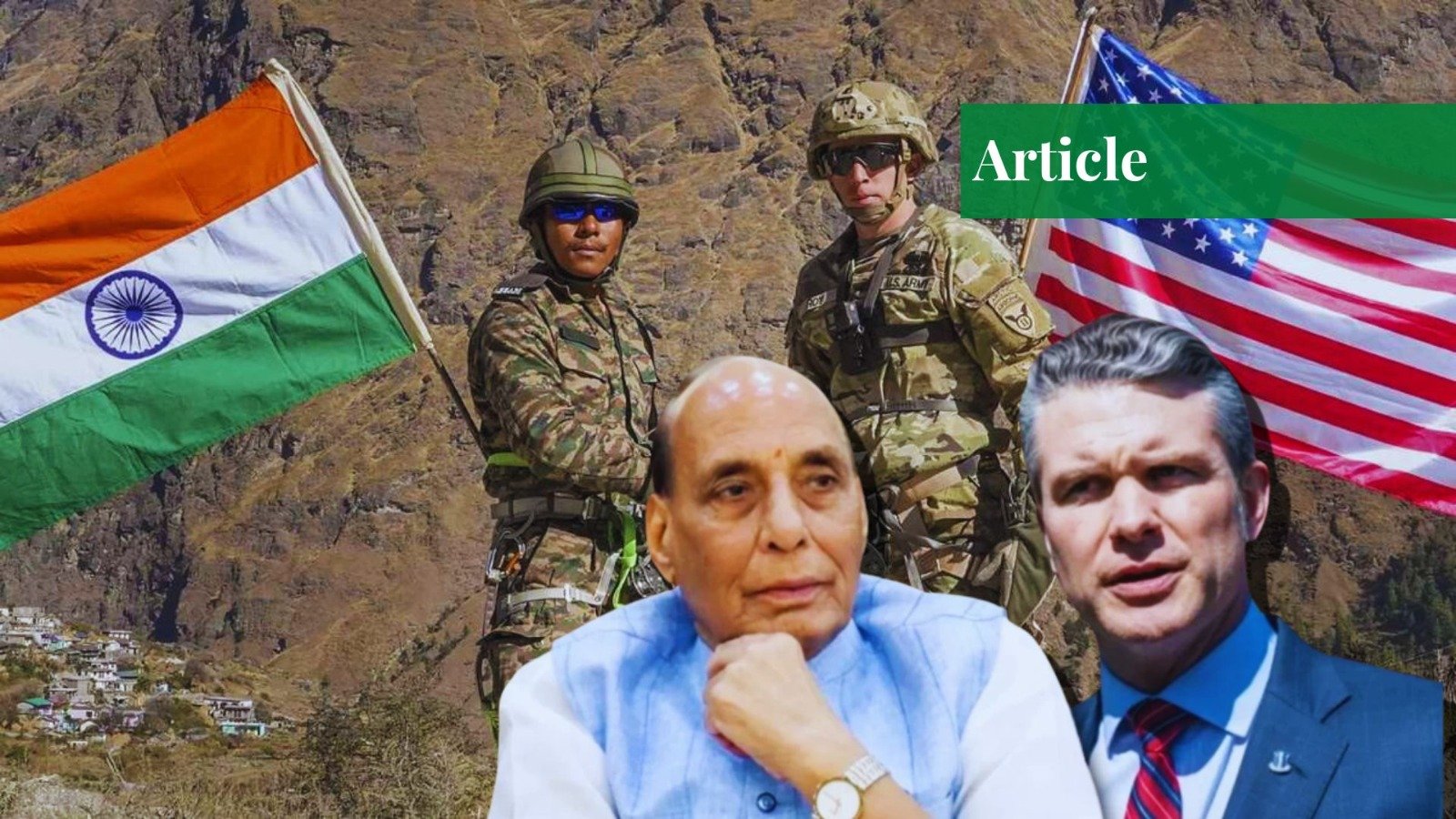India-US Defense Deal: A New Chapter in Strategic Cooperation
On October 31, the United States and India signed a 10-year defense deal. This development comes after a period of intense relations between the two sides. The United States imposed significantly high tariffs on India due to the latter’s oil imports from Russia. The Trump administration also accused India of supporting Russian aggression against Ukraine. Hours before the Trump-Putin Summit in Alaska, US officials threatened India with more tariffs if the negotiations to end the Russia-Ukraine war failed. However, the Russian President Putin smartly restrained the United States from doing so through his extraordinary diplomatic skills.
Fighter Jet Politics: Between F-35s and SU-57s
US President Donald Trump seeks an increase in Indian military purchases from the United States. During the last visit of the Indian Prime Minister Narendra Modi, President Trump offered to sell F-35 fighter jets to India. However, Indian opposition parties criticized the Modi government for showing interest in purchasing F-35 jets. They maintained that the F-35 jets are expensive and obsolete. In November 2024, Elon Musk, a former official of the Trump administration, also declared these jets obsolete and inefficient.
Following the US bid to sell F-35 jets to India, Russia also offered to sell the state-of-the-art Russian SU-57 fighter aircraft to India. The Russian offer was more lucrative for India, as it included technology sharing and local manufacturing of the SU-57 in India. However, the Indian government was more interested in buying the F-35, allegedly due to some personal financial interests of the Modi government. However, rising pressure from the opposition hampered the Modi government from finalizing any such deal with the United States, triggering tensions between India and the United States.
Diplomatic Tensions and the Trump Factor
India’s denial of President Trump’s role in establishing a ceasefire deal between Islamabad and New Delhi further escalated these tensions. President Trump repeatedly mocked India for its loss of seven fighter jets in its short war with Pakistan, adding to the chagrin of the Modi government. In addition, President Trump claimed that he saved the region from a nuclear war. However, the Indian government kept on denying all such claims due to its shameful defeat in the four-day war with Pakistan. President Trump cunningly showed a tilt towards Pakistan to exert pressure on New Delhi.
He invited the Pakistani chief of army staff (COAS), Field Marshal Asim Munir, to Washington for an official dinner. On multiple occasions, President Trump admired Field Marshal Asim Munir and declared him his “favorite.” However, the recent 10-year defense deal between India and the United States reflects that President Trump cunningly exploited India-Pakistan rivalry to materialize US regional ambitions.
The United States also beguiled Pakistan and other Muslim countries to sign the controversial 20-point peace plan to perpetuate and legitimize Israel’s occupation of Palestine. Through this deal, the United States has also positioned different Muslim countries against Hamas. Under this so-called peace plan, Muslim countries will send troops to Gaza to disarm Hamas, serving Israeli interests.
Strategic Implications for South Asia and Beyond
The new 10-year defense deal between India and the United States hits Pakistan and China’s regional ambitions. This deal poses a significant threat to Pakistan’s security as it strengthens India’s defense capabilities. Under the current defense deal, the two countries will have enhanced industrial collaboration and advanced technology transfer in order to counter China’s rising influence and ensure a free and open Indo-Pacific region.
It lays down a long-term framework for enhanced cooperation and collaboration in intelligence sharing, strategic coordination, and defense technology. This defense deal also allows the two countries to share military intelligence, enables interoperability, and permits the two countries reciprocal access to military bases for logistic support and refueling.
In addition, it improves targeting and navigation in the Indo-Pacific region through real-time US geospatial intelligence. Under this pact, India is declared a “Major Defense Partner” of the United States. Moreover, the deal allows for the local manufacturing of GE F-414 jet engines by Hindustan Aeronautics Limited (HAL) through US technology sharing, an unprecedented assistance by the United States to a non-ally. The deal also allows for collaboration and cooperation in dual use of technologies, including quantum computing, AI, biotechnology, semiconductors, and space technology, with a particular focus on integrating the defense ecosystem of the two countries.
Furthermore, the deal allows the Indian state to procure high-end equipment from the United States, including transport planes, Seahawks, maritime patrol aircraft, and armed drones, and also enhances maritime security in the Indo-Pacific region. Although this deal is an extension of the previous 10-year defense agreement between the two sides, it jeopardizes Pakistan’s security as it provides significant strategic leverage to India.
Pakistan has shown a significant diplomatic tilt towards the United States in the past few months. However, Washington has always been known for its betrayal of its allies. Therefore, Islamabad needs to tread cautiously into its diplomatic engagements with the United States. Otherwise, the country will once again have to face diplomatic and strategic complexities due to the paradoxical and hypocritical role of the US establishment.
If you want to submit your articles and/or research papers, please visit the Submissions page.
To stay updated with the latest jobs, CSS news, internships, scholarships, and current affairs articles, join our Community Forum!
The views and opinions expressed in this article/paper are the author’s own and do not necessarily reflect the editorial position of Paradigm Shift.
Muhammad Hamza Tanvir is a political analyst specialising in South Asian and Middle Eastern affairs. His work focuses on religious nationalism, regional security, and minority rights. He has been featured in Stratheia, Pakistan Today, Pakistan Observer, and the Asian Mirror. He is also working as a research analyst and political commentator for Paradigm Shift and contributes to the monthly magazine of Nearpeer



